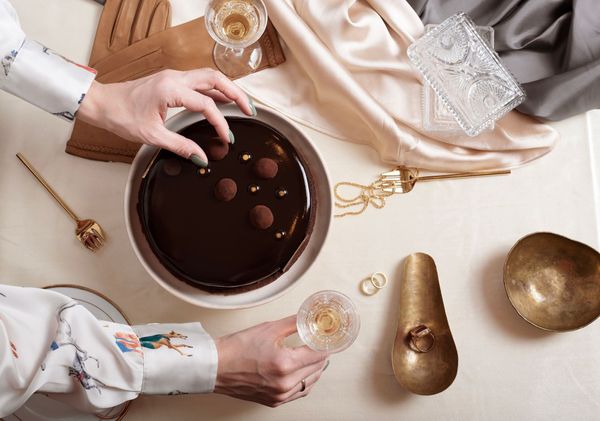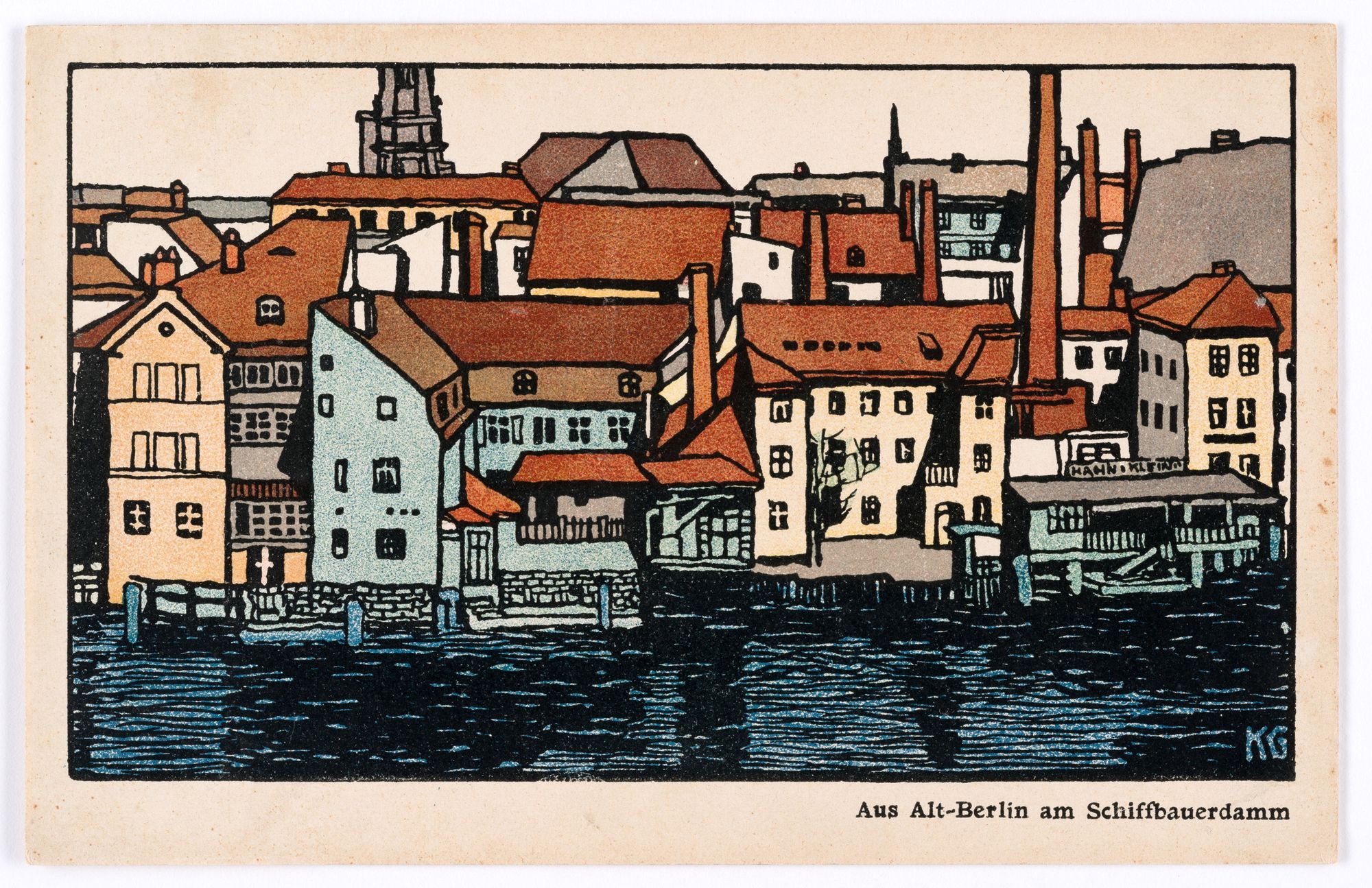The Wiener Werkstätte’s 1911 postcards present the sights of the German capital in vivid colors and playful compositions.
After Budapest, this time we present Berlin in the early 1910s through the postcards of the Wiener Werkstätte (Vienna Workshops). As mentioned before, the Wiener Werkstätte was founded in 1903 by businessman Friedrich Waerndorfer and two prominent figures of the Viennese Art Nouveau, architect Josef Hoffmann and artist Koloman Moser. The company emphasized the vital connection between art and craft, art and life, and its primary aim was to introduce good design and craftsmanship to architecture, fashion, furniture, and the graphic arts. Their program was outlined in a 1905 publication. “The limitless harm done in the arts and crafts field by low-quality mass production on the one hand and by the unthinking imitation of old styles on the other is affecting the whole world like some gigantic flood… It would be madness to swim against this tide. Nevertheless, we have founded our workshop. Where appropriate we shall try to be decorative without compulsion and not at any price.”
The Wiener Werkstätte also produced stationary, ex-libris, book designs, and postcards. Postcards as a commodity were an Austrian invention with the first appearance around 1869, and postcard collecting became fashionable in the late 1890s. The use of postcards to promote new events and ideas had already been used in the Vienna secession, so when the Wiener Werkstätte needed to expand its clientele, they used postcards to advertise their buildings, new branches, or their fashion department opened in 1910.

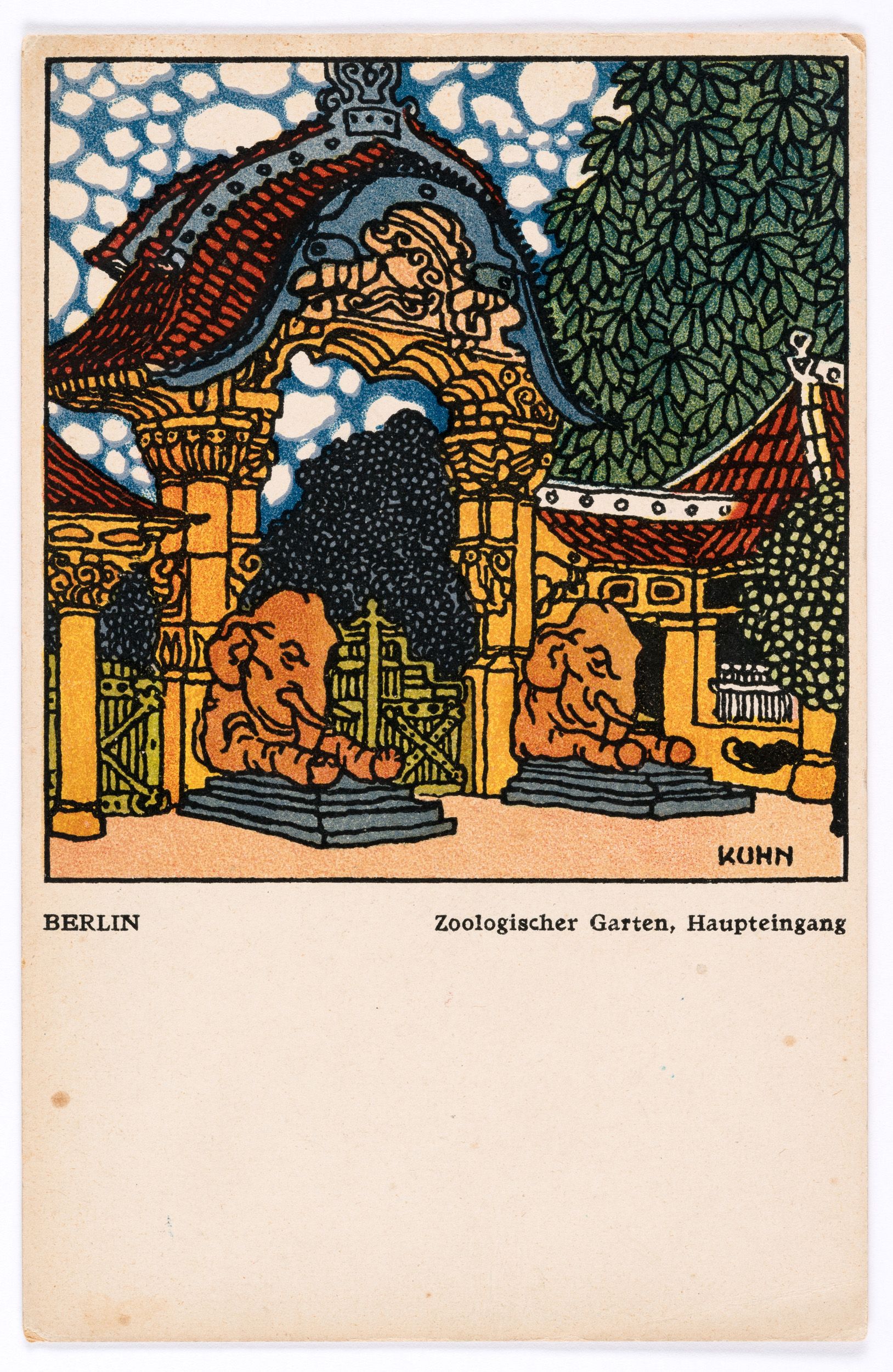
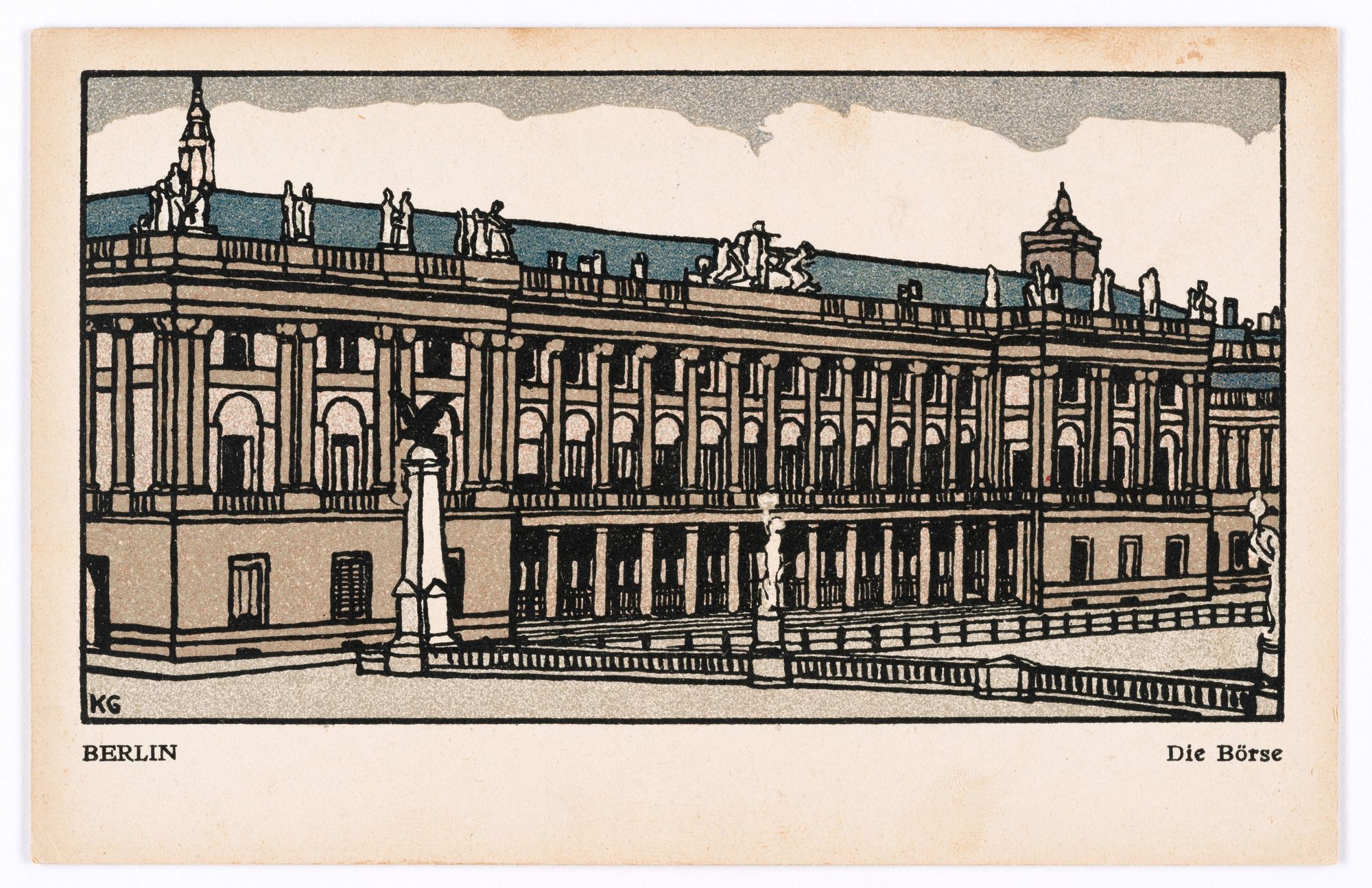
The series of numbered postcards, which eventually totaled nearly 1,000, was launched in 1907. Many of them were designed to celebrate holidays such as Christmas and Easter, but popular subjects included contemporary and historical fashions, humorous themes, and best-loved tourist attractions of the period.
The latter includes graphics of famous places in various capitals. Berlin was developing even more dynamically than Budapest, so postcards of its sights were also published. Most of them were made by Franz Kuhn (1889-1952), who had studied at the University of Applied Arts Vienna between 1910 and 1916 but had been producing postcards for the Wiener Werkstätte in 1910 and 1911. In his later life, he mainly designed furniture and buildings. Some of them were by Gustav Kalhammer (1886-1919), who studied at the Academy of Fine Arts, worked as a drawing teacher and painter, but also tried his hand at applied arts. In addition to postcards, he designed wallpaper, book covers, and advertising graphics.
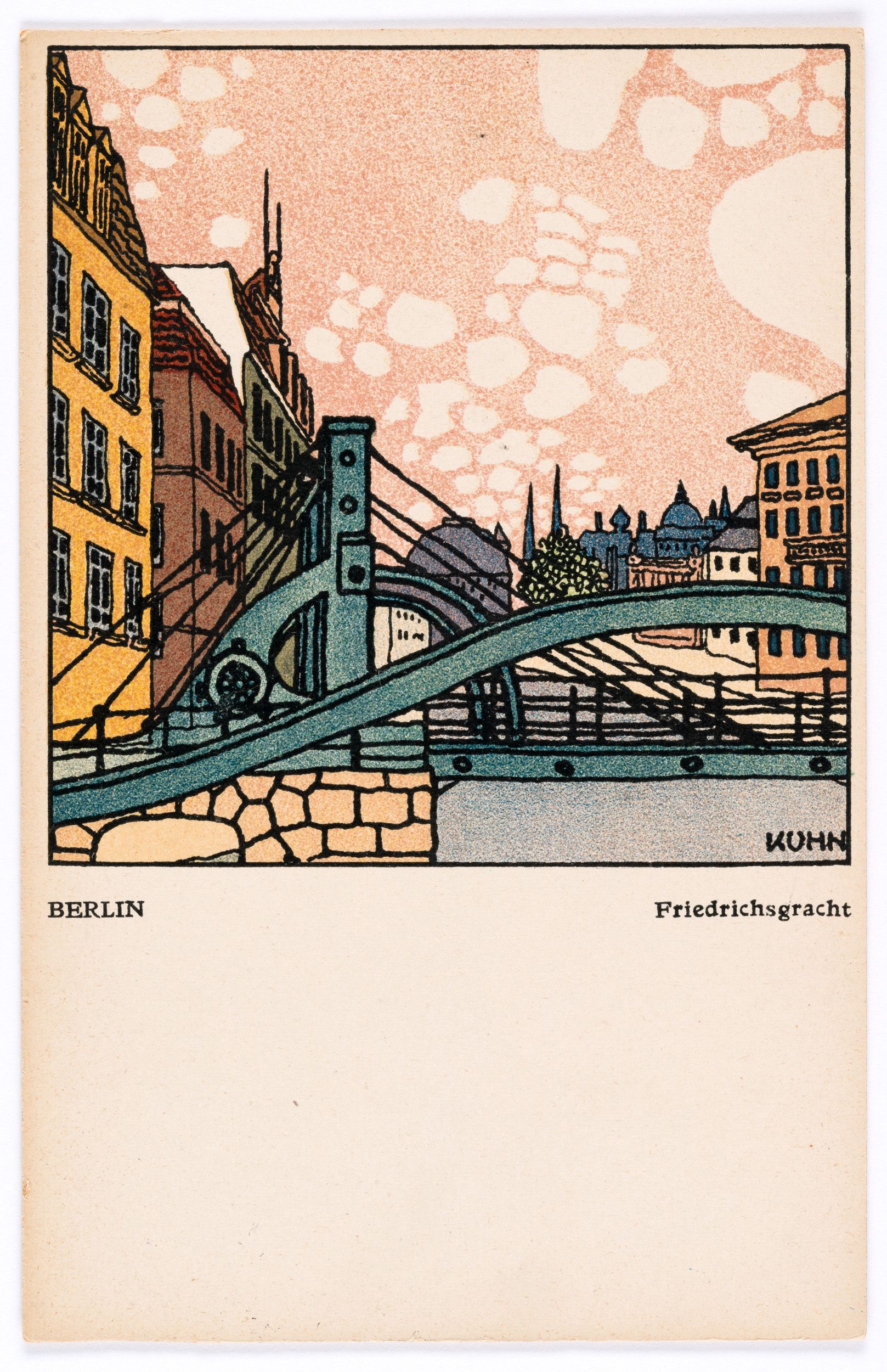

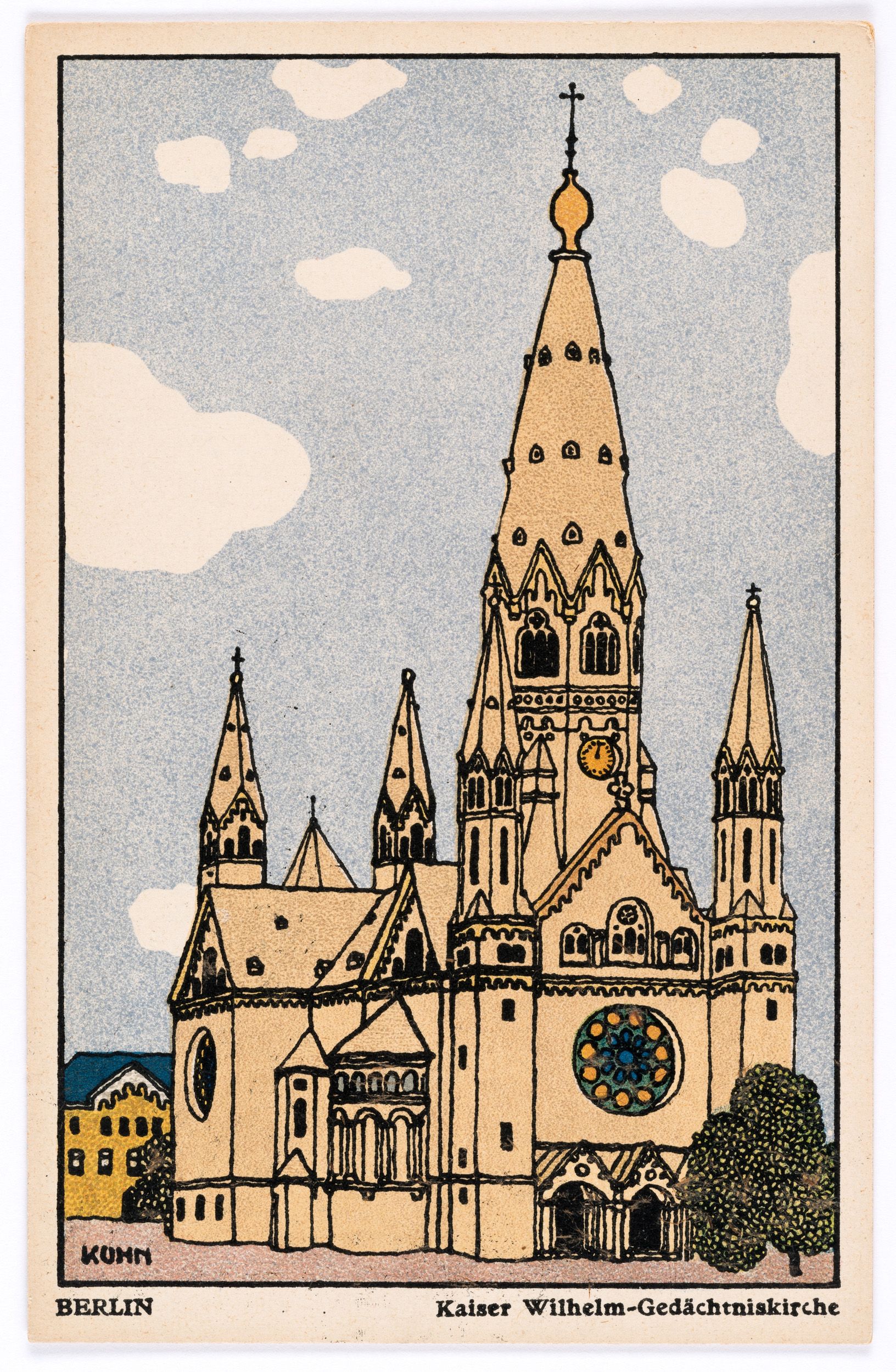
Postcards of Berlin with captions in German include architectural landmarks such as the Brandenburg Gate, the entrance to the Zoo, the Kaiser Wilhelm Memorial Church, the Märkisches Museum, and the Cathedral. Most of the postcards are characterized by cheerful colors, playful, light compositions, a few figures on the streets, and plants growing around the buildings.
The Wiener Werkstätte’s postcard production was interrupted between 1913 and 1919, perhaps because of a lack of interest in postcards or because of World War I. In any case, there was a last, unsuccessful attempt to revive postcard production in 1919 and 1920, and finally, the economic crisis of the late 1920s forced the company to close in 1932. Fortunately, however, the postcards survived.
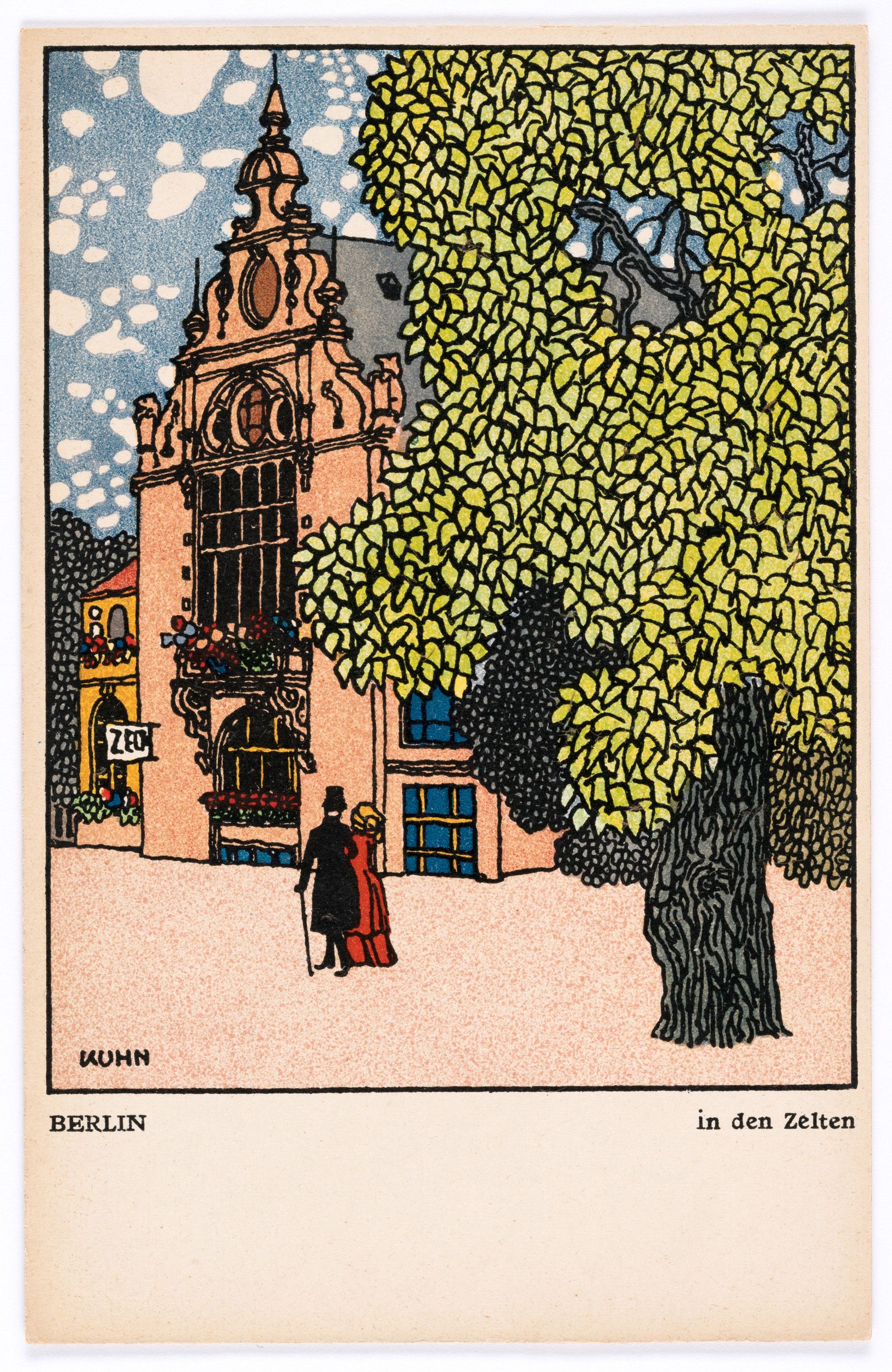
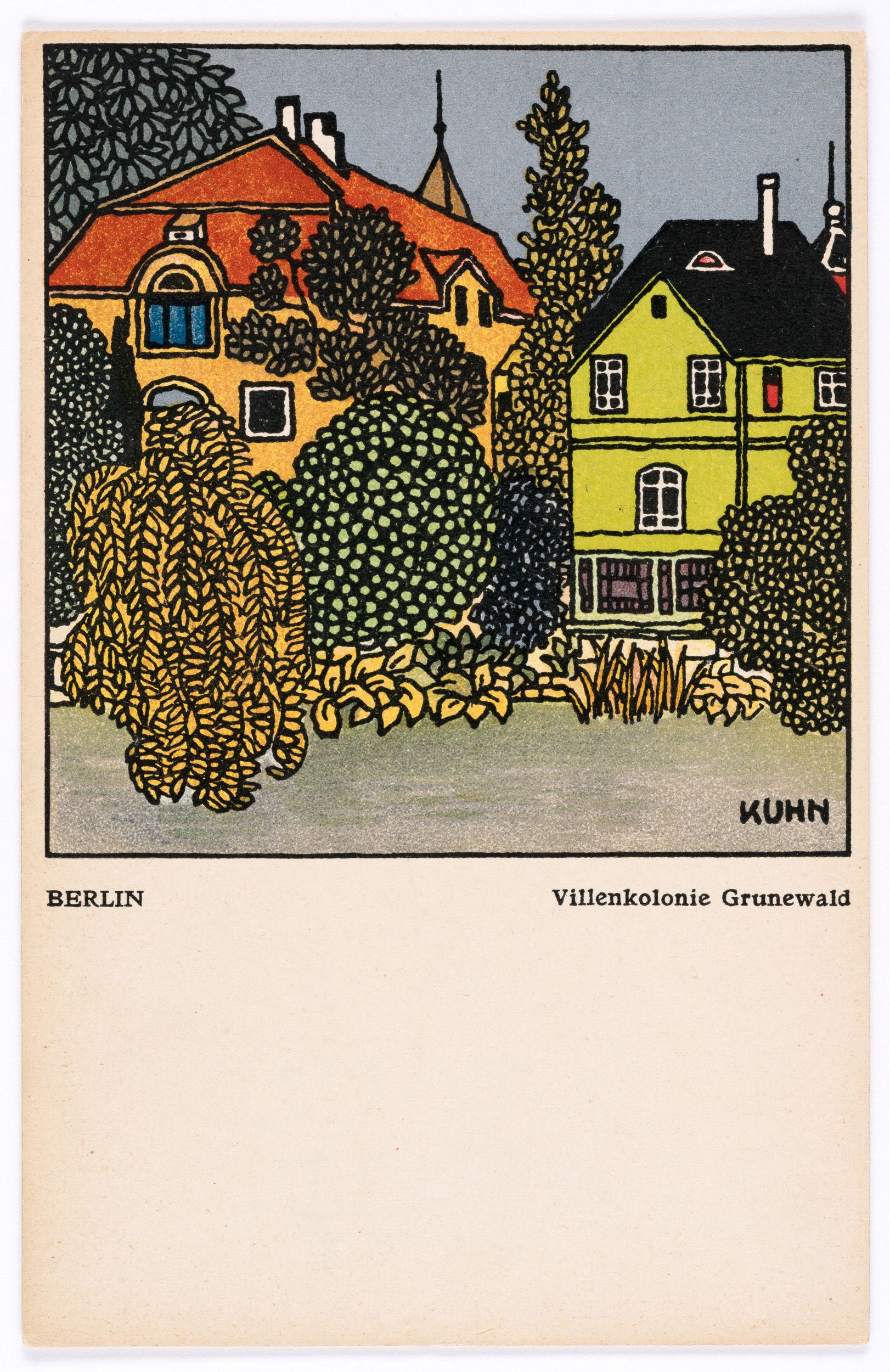
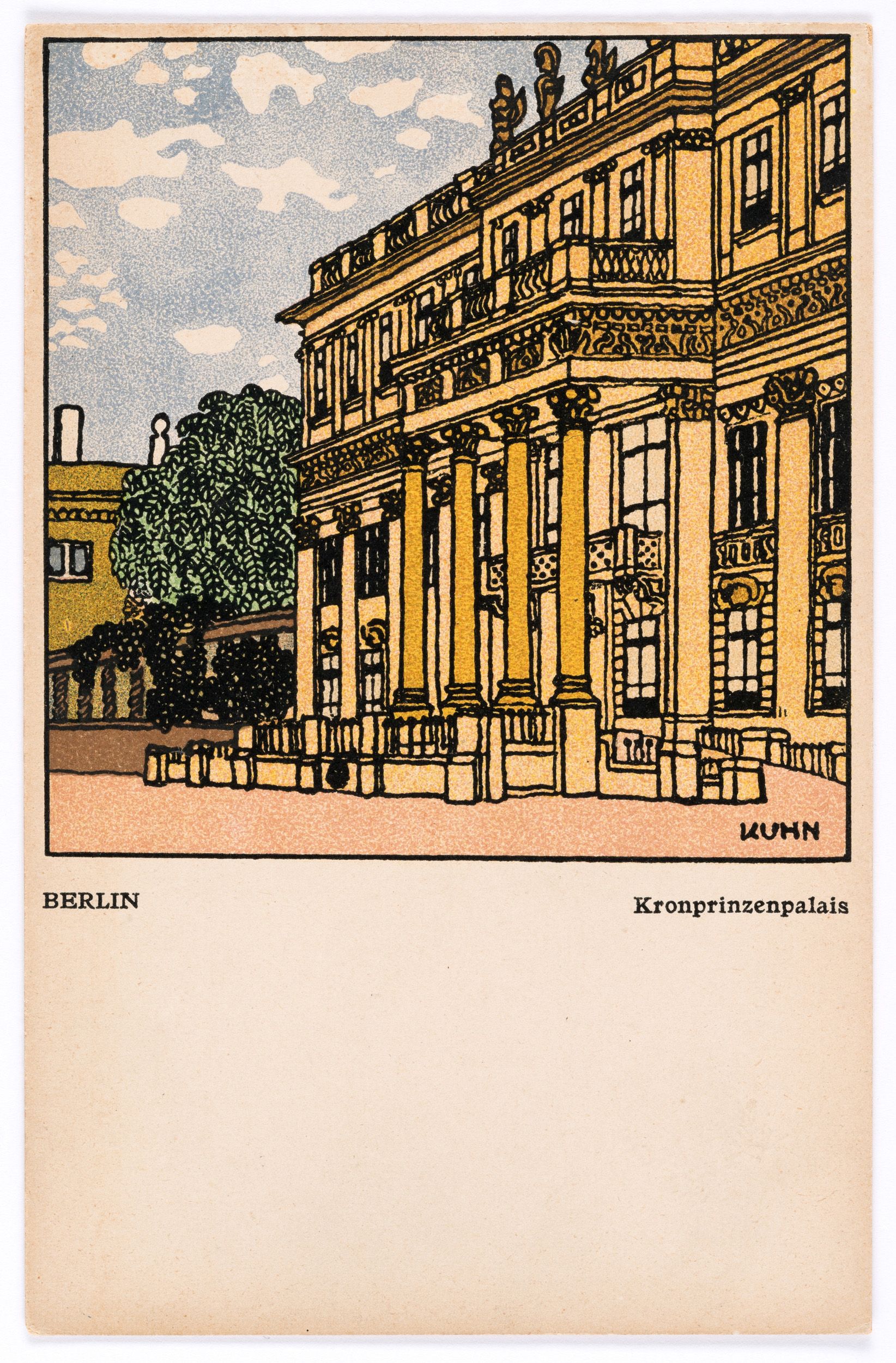
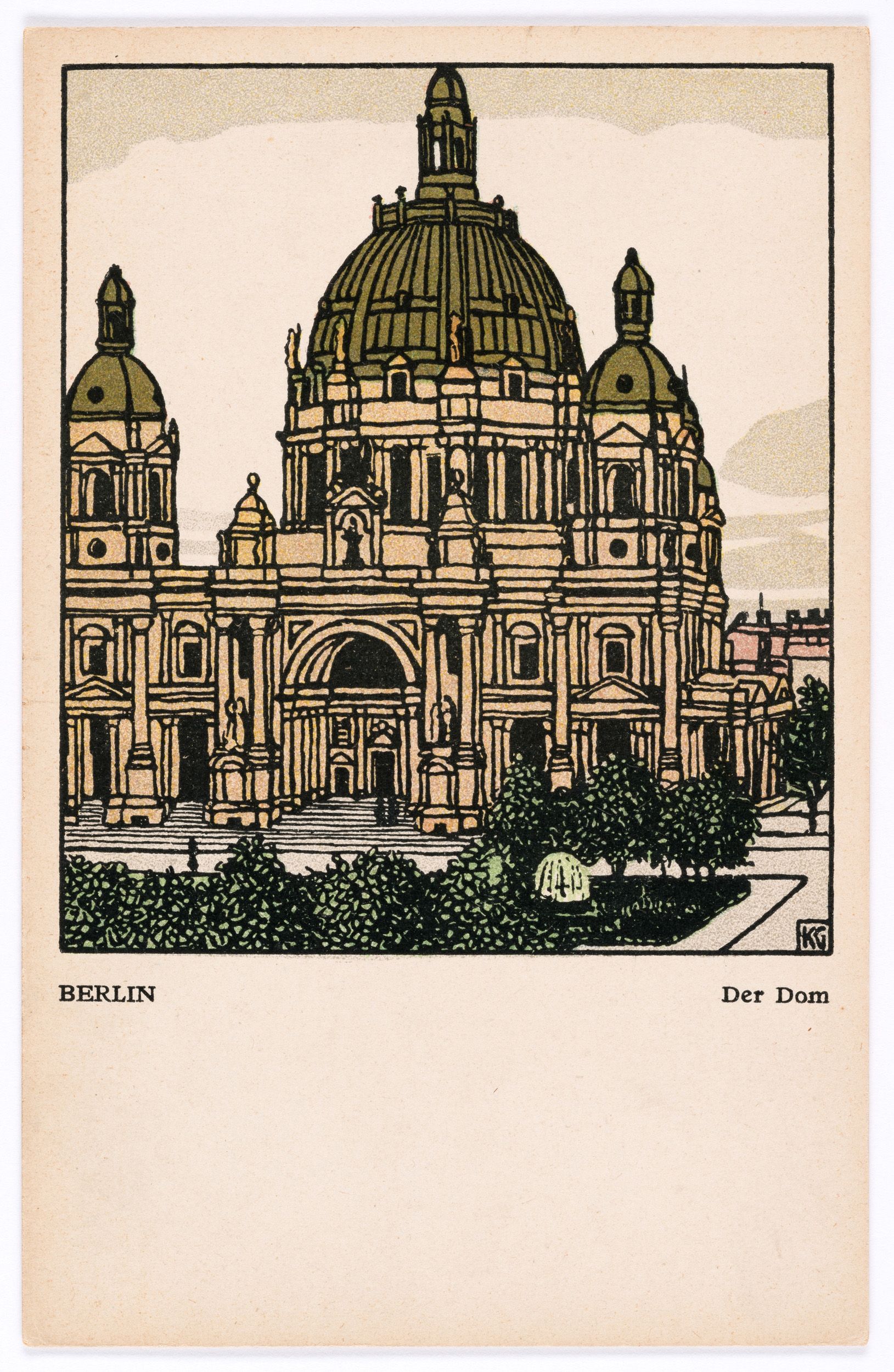
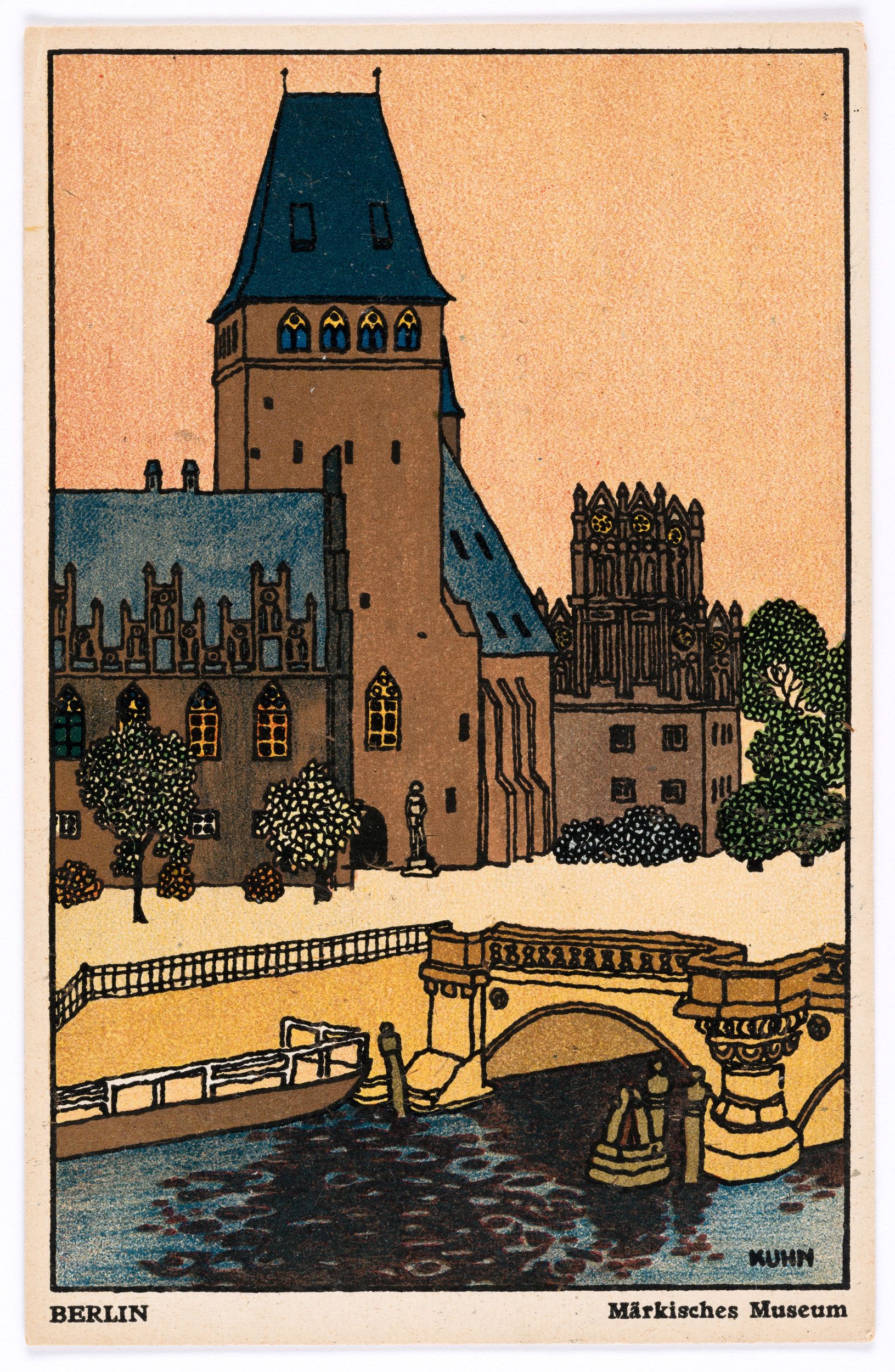
Sources: wienmuseum.at | theviennasecession.com | Postcards of the Wiener Werkstätte. A Catalogue Raisonné (ed.: Elisabeth Schmuttermeier–Christian Witt-Dörring). Hatje Cantz, New York, 2011 | Judith Koós: A Wiener Werkstätte: 1903-1932 (Művészettörténeti Értesítő, 1968/1–2.)
Cover photo: Wiener Werkstätte Nr. 435 © Gustav Kalhammer/Wien Museum
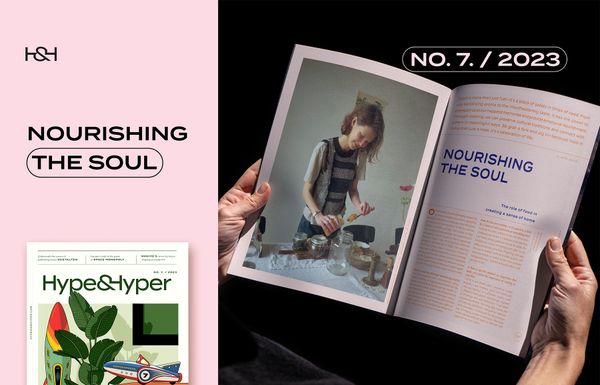
Nourishing the soul | The role of food in creating a sense of home

It’s simple, we just overcomplicate it | Father and son
